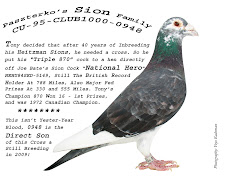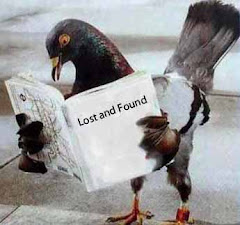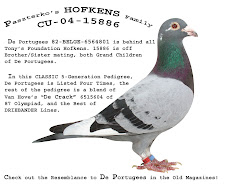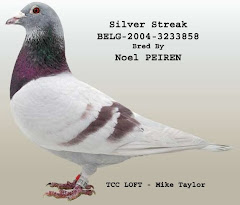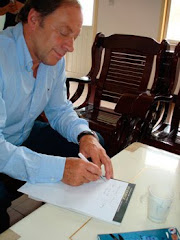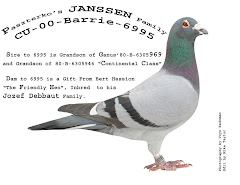"Many think the eyes of a bird are very important. Some have made a lot of money writing about eye signs and eyes. Although these same men are very unsuccessful when racing pigeons, their 'eye' books sell like hotcakes. It is the same old story of the average fancier looking for instant success and he'll usually try anything no matter how ridiculous. The eyes must be bright and have plenty of color or pigment. They will get brighter as the bird reaches peak condition and will become pale and lose pigmentation when the bird loses condition or gets sick. The pupil should be located in direct line with the split of the beak so the wattle can protect the eyes from the elements. Penn State University of State College, Pennsylvania has conducted some interesting experiments with homing pigeons.
One of these experiments dealt with testing the eyes and the theories connected with the eyes. The students obtained a group of 20 young racing pigeons. After getting the birds settled to their new home, they began to exercise and train the team. They took the group of birds about 20 miles from their home and released them. All homed in good condition. After many similar tosses, the team was equipped with contact lenses, but these lenses were different from others. They were clouded and colored so that the birds could only see for a distance of six feet. The team was again taken 20 miles from home and released. Again all arrived in good time even though the birds were almost blind because of the lenses. The lenses were all removed from the bird's eyes and then wax ear plugs were inserted into the bird's ears. Again the team was taken to the 20 mile release point and liberated. Not one returned home that day. After a few days, some of the birds returned because the wax plugs melted and fell out of the bird's ears. Eventually all the birds returned but only after the plugs melted. Not one bird returned while the plugs were still in the ears. It is safe to assume that birds need their ears more than their eyes to home successfully. Isn't it strange that there are 'eye theories' but no 'ear theories?' "
Taken from
Rotondo on Racing Pigeons
Joe Rotondo
1980







